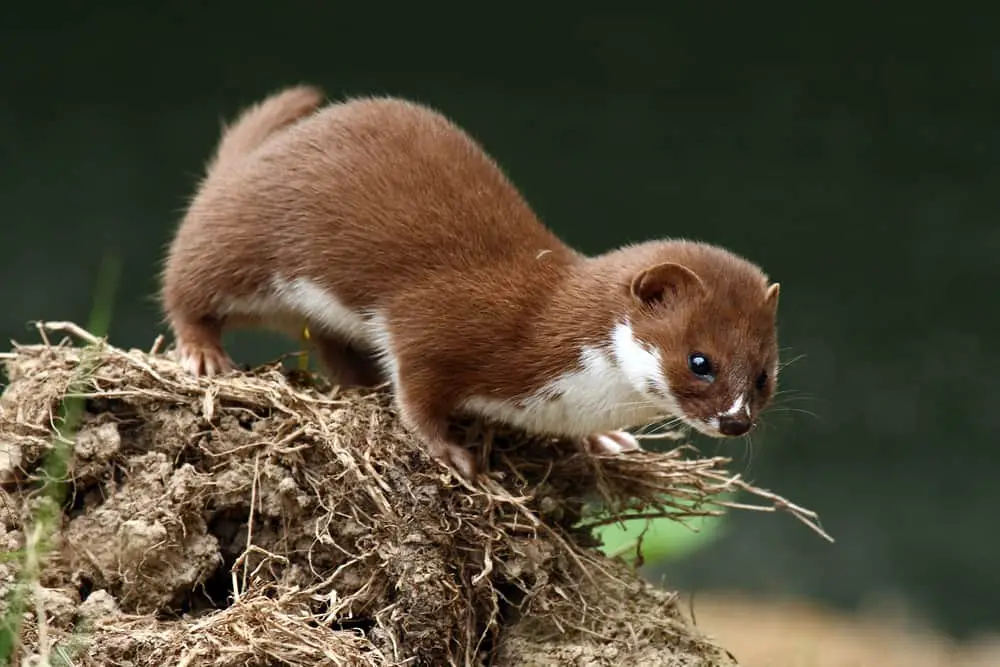
There are few animals as ferocious as the weasel. While small in stature, these mammals are very active predators that hunt rodents such as rabbits and mice, as well as birds and frogs. A weasel may consume up to 40% of its body weight per day.
Although weasels hunt day or night, they are active mostly during the hours of dawn and dusk. With a home range of 10 to 30 acres, weasels are solitary and will defend their territory from invaders, except during the breeding season when they will seek out a mate.
Table of Contents
- Where do Weasels Live?
- How Big Are Weasels?
- 1. Stoat
- 2. Mink
- 3. Polecat
- 4. European Badger
- 5. Honey Badger
- 6. Wolverine
- 7. Fisher
- 8. Sable
- 9. Ferret
- 10. North American River Otter
- 11. Sea Otter
- 12. Skunk
- 13. Zorilla
- 14. Tayra
- 15. Greater Grison
Where do Weasels Live?
The weasel can be found all over the world, from North America down to South America, throughout Europe, North Africa, and Asia. They do not inhabit Australia, sub-Saharan Africa, or India. Weasels may live in an abandoned burrow or make a nest under rocks or in a hollow log.
They live in varied habitats from forests and grasslands to sand dunes and moors. In the wild, a weasel may live for up to two to three years.
How Big Are Weasels?
Compact with long, slender bodies and short legs, weasels are generally about six to 10 inches long with their tails being about a quarter of their length. Males weigh in at an average of about seven ounces and are larger than females, who weigh a little more than half that.
Weasels usually have red, brown, or gray coats with white bellies, although most species will turn all white in the winter. They do not hibernate and will be active all year long.
In the family Mustelidae, weasels and their relatives are a very successful and voracious group. Here are 15 other animals similar to the weasel.
1. Stoat
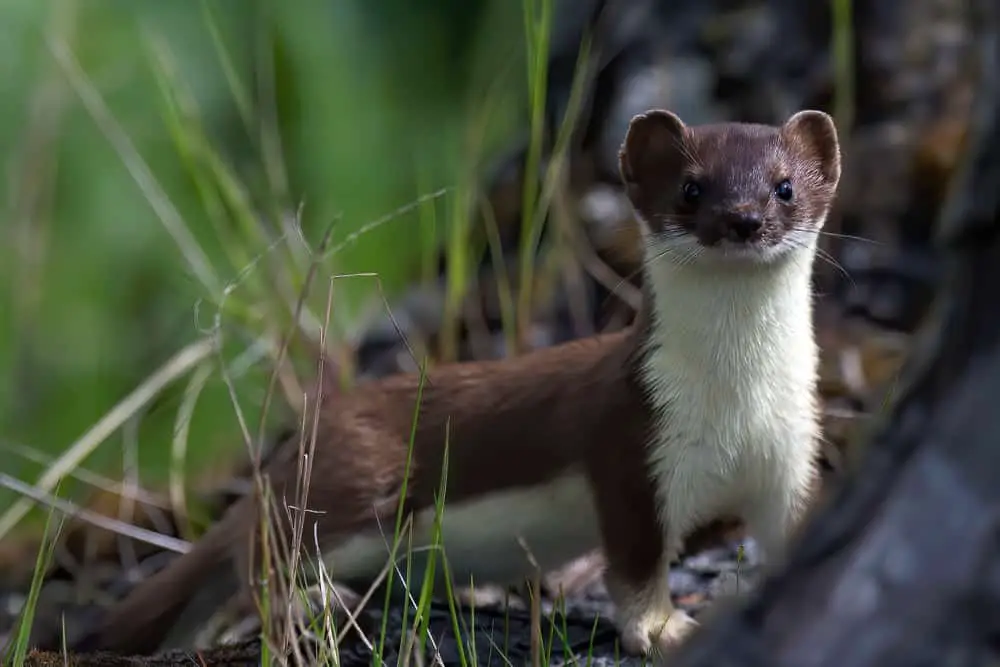
The weasel’s closest relative is probably the stoat, or ermine, being slightly larger at about eight to 12 inches. They can weigh as much as a pound. Stoats also have longer tails with a distinct black tip, and their coloring is reddish-brown with a white belly.
Stoats range only in northern latitudes, from the northern United States into Canada, Northern Europe, and Asia. They have also been introduced to New Zealand, but are an invasive species there.
The diet of a stoat is similar to that of the weasel, preying on just about any small vertebrate it can catch. Stoats are also active both during the day and night. They can live from two to five years.
Stoats have a very distinctive bounding gait, which distinguishes them from weasels. They also differ in their mating habits. Stoats delay the implantation of an egg fertilized in the summer until the following spring when they will bear a litter of six to 12 kits.
2. Mink
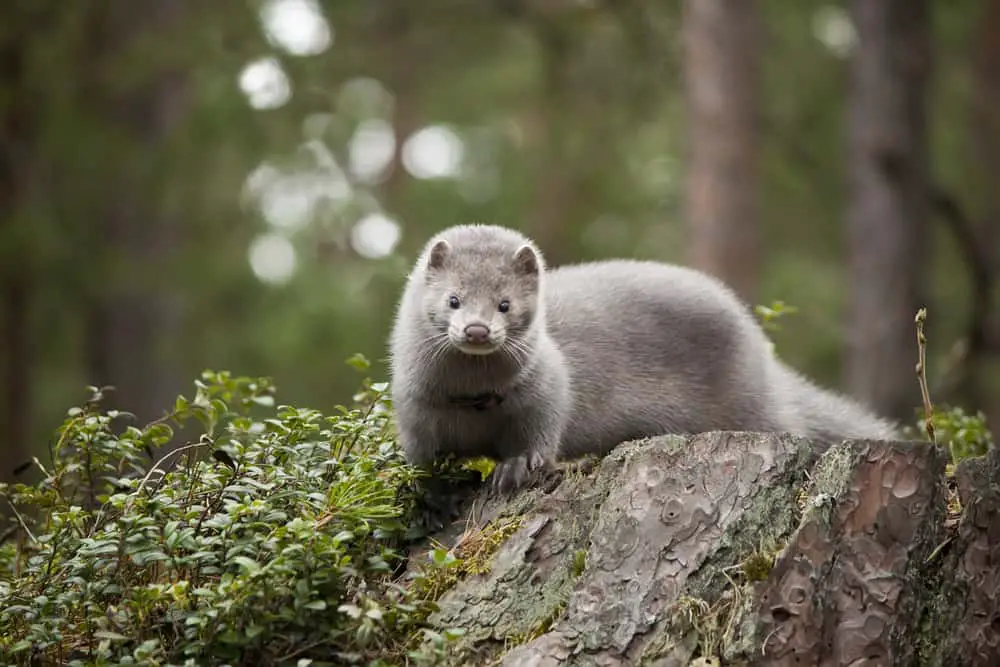
Semi-aquatic relatives of the weasel, mink come in both an American and European variety. They live near lakes, ponds, and streams, digging dens or nesting in hollow logs. Mink inhabit North America, Canada, and Northern Europe, although wild European mink are endangered.
They differ from weasels in that they require proximity to water in which they hunt fish, crustaceans, frogs, muskrat, waterfowl, and eggs. Similar to the weasel, mink hunt most often during the hours of dawn and dusk.
Mink has long been prized for its fur, which is dark-colored and water-resistant. They may grow to as much as two feet long, with an additional eight inches of tail, and weigh up to two pounds or more. These solitary predators will live around three to five years in the wild.
3. Polecat
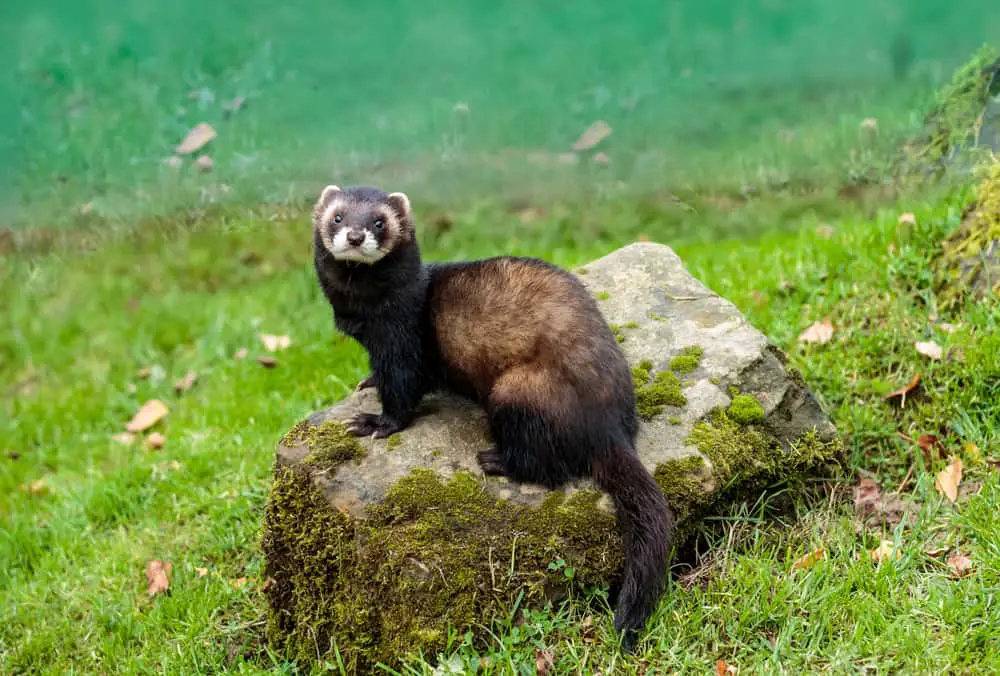
With a raccoon-like mask across their faces, polecats are distinctive-looking cousins of the weasel. Living in Western Europe, polecats will nest in burrows in wooded areas or marshes.
They have a similar diet to weasels but are larger than their more slender cousins. Polecats can reach lengths of about 18 inches and weigh up to two pounds, with females being smaller than males. These mammals have an average lifespan of about five years.
Polecats are very closely related to ferrets, and although solitary, they are probably the least territorial members of their family. Polecats tend to be nocturnal and hunt mostly at night.
4. European Badger
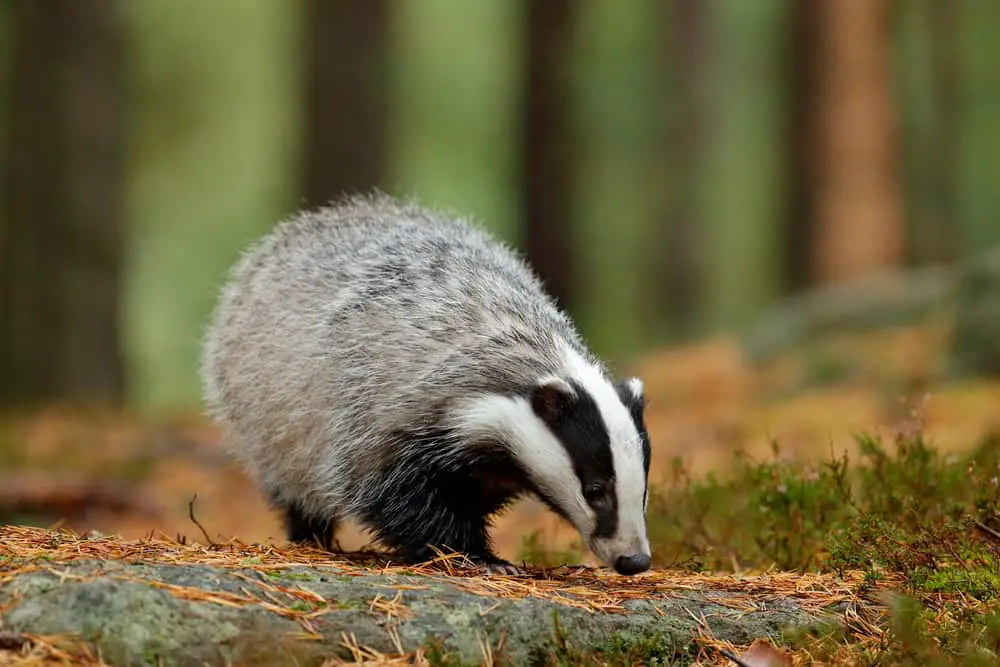
Another nocturnal member of the weasel family, the European badger is found throughout Europe. It is a short, stocky, powerfully built mammal with black, white, and grey fur. They dig their own burrows, which often can have multiple entrances and chambers within.
Badgers are quite large compared to weasels, weighing from 15 to 35 pounds, depending on the season. They fatten up in the autumn, getting ready for winter hibernation. Badgers can be as much as three feet long and a foot high at the shoulder, with a small tail of only several inches.
With an omnivorous diet, badgers eat mushrooms, grass, fruit, and acorns in addition to small animals, birds, and insects. Earthworms are an important food source for them as well. European badgers can live for up to 15 years.
5. Honey Badger
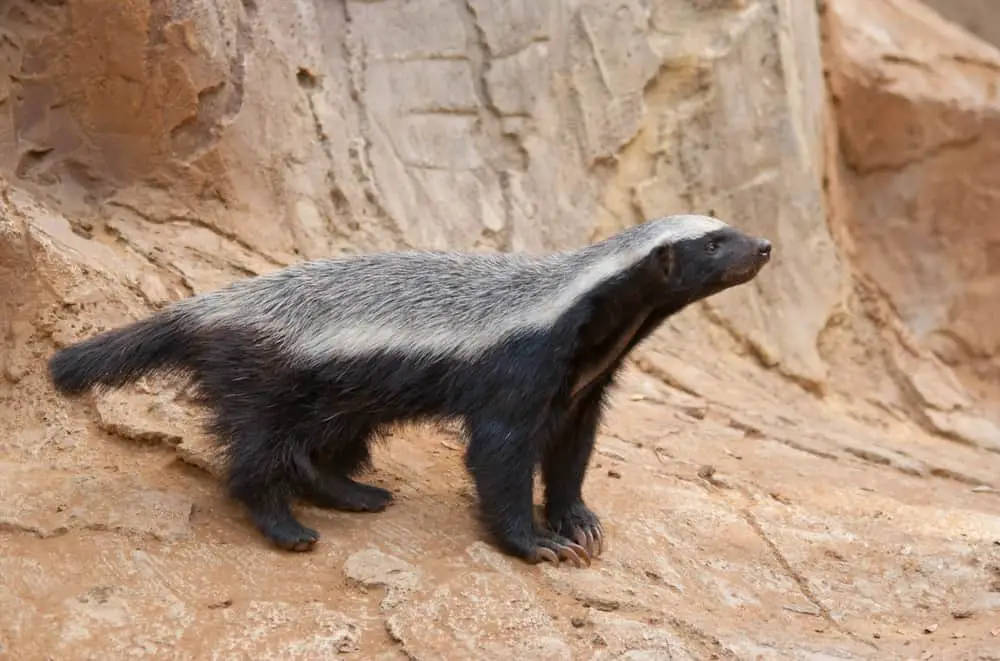
Honey badgers are a distinct species different from the European badger and reside in sub-Saharan Africa, Southwest Asia, and India. They have a fierce reputation for fearlessness and savagery if cornered and attacked, known for fending off lions and hyenas.
More closely related to weasels than badgers, this mammal can be up to two and a half feet long, be almost a foot high at the shoulder, and weigh around 25 to 30 pounds. Their bodies are broad and short, with powerful claws, similar to European badgers.
Unlike weasels, honey badgers have omnivorous diets, feeding on roots, berries, and bulbs in addition to their namesake honey. They also eat bee larvae, insects, snakes, and other small vertebrates, often digging them out of their burrows.
6. Wolverine
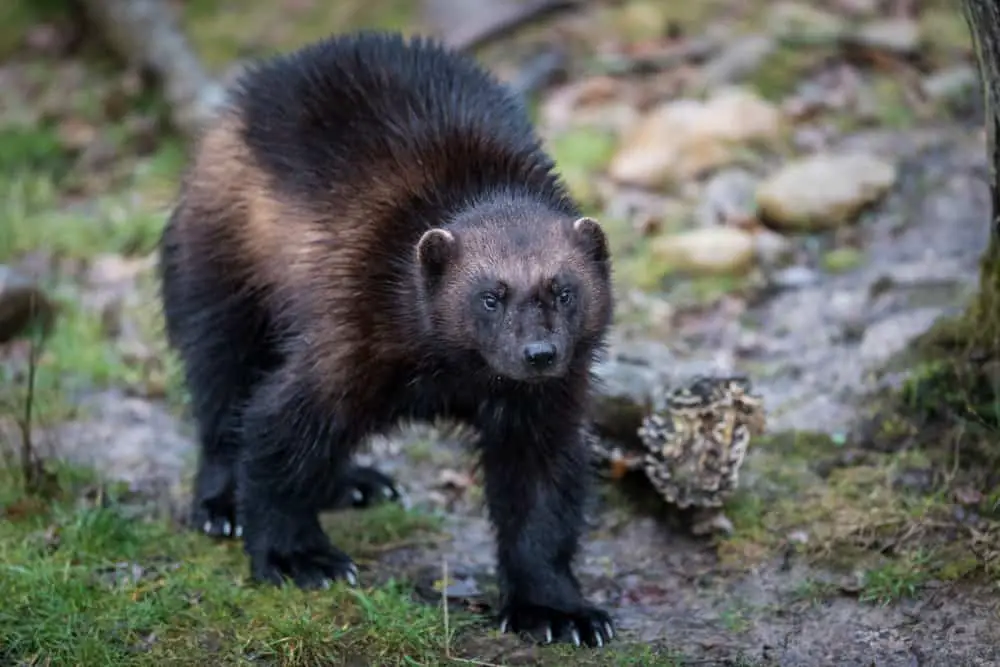
The wolverine is another member of the weasel family with a ferocious and well-deserved reputation. Wolverines inhabit the northern climates of Europe, Asia, and North America. They are stocky and muscular mammals with dark fur, looking more like a small bear than a weasel.
Wolverines can reach up to three and a half feet long and weigh 70 pounds or more. They are both scavengers and hunters and will pursue porcupines, rabbits, and squirrels in addition to larger prey such as deer, sheep, and even bison.
Having large ranges that can be more than 200 square miles, wolverines can cover an enormous amount of distance in a day. A male wolverine’s territory may overlap several females with whom they form lifelong relationships. In the wild, a wolverine will have a lifespan of about eight to 10 years.
7. Fisher
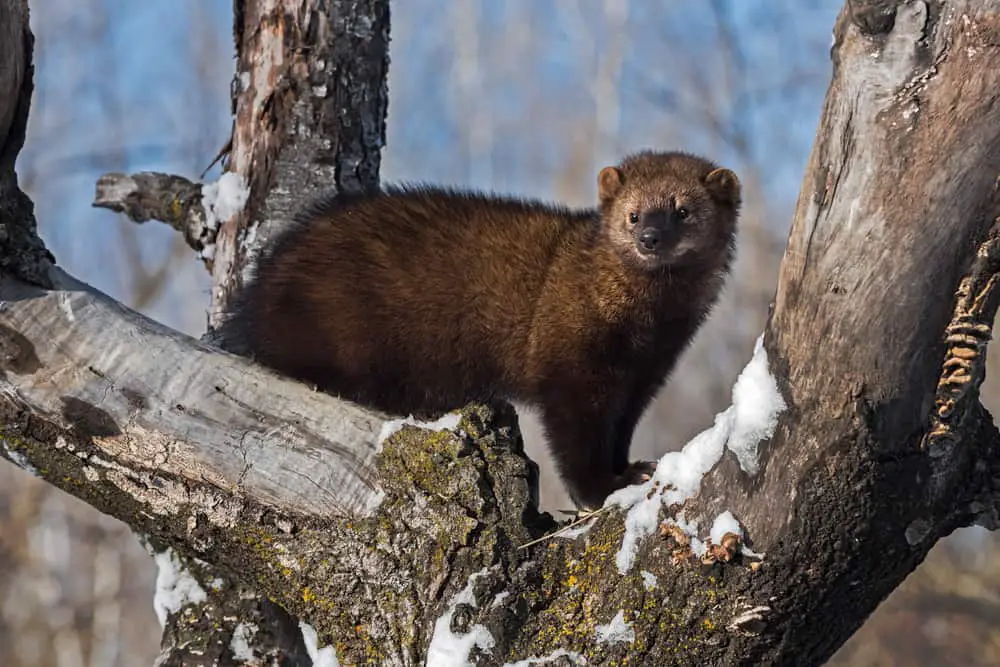
Native only to the Northern United States and Canada, the fisher inhabits the temperate boreal forests. Like their weasel cousins, they are long and slender, weighing only about six to 12 pounds, but reaching nearly four feet in length.
With a coarse coat of dark brown to black, fishers stand out against the snow in winter. Although they are adept climbers, being able to descend trees headfirst, fishers forage and hunt mostly on the forest floor.
Fishers don’t actually eat fish, but rather subsist on an omnivorous diet of fruit, nuts, mushrooms, and small animals, especially snowshoe hares. They can live for up to 10 years in the wild.
8. Sable
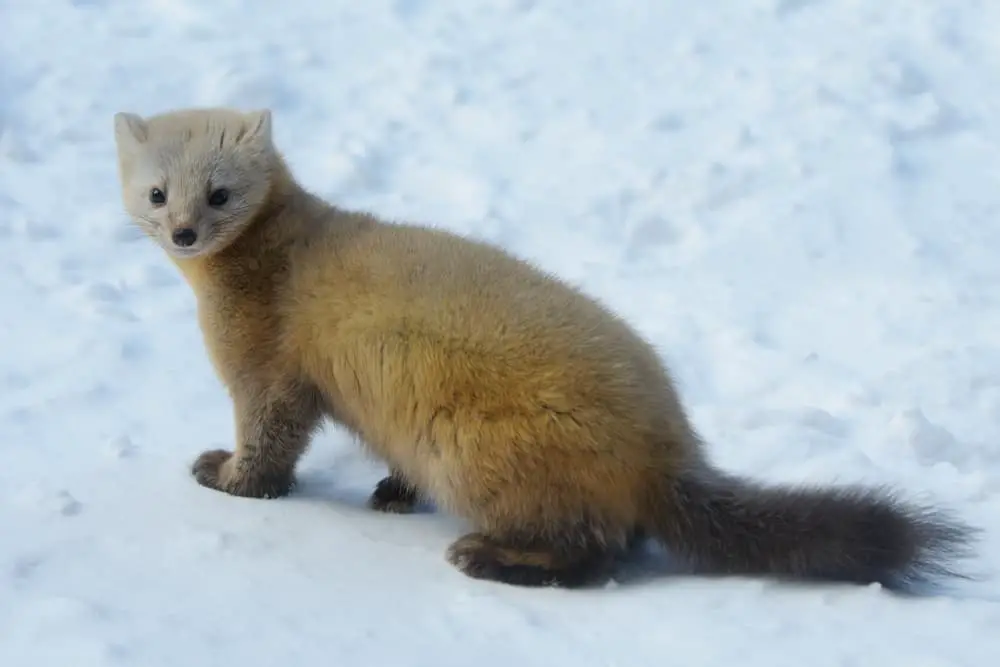
The sable is closely related to the fisher but resides in the temperate evergreen forests of Eastern Europe and Asia. They are also considerably smaller at around two feet in length and weighing around two to four pounds, with the same long and slender body type.
Sables also have a similar omnivorous diet which may include hares, birds, small weasels, berries, and carrion. They live in burrows within the forest or near rivers, and like the weasels, are primarily active during dawn and the twilight hours.
These mammals have been hunted for their thick, luxurious dark brown or black fur, and are still farmed for that purpose. Sables have relatively long lifespans for their family, living as much as 22 years in captivity or up to 18 years in the wild.
9. Ferret
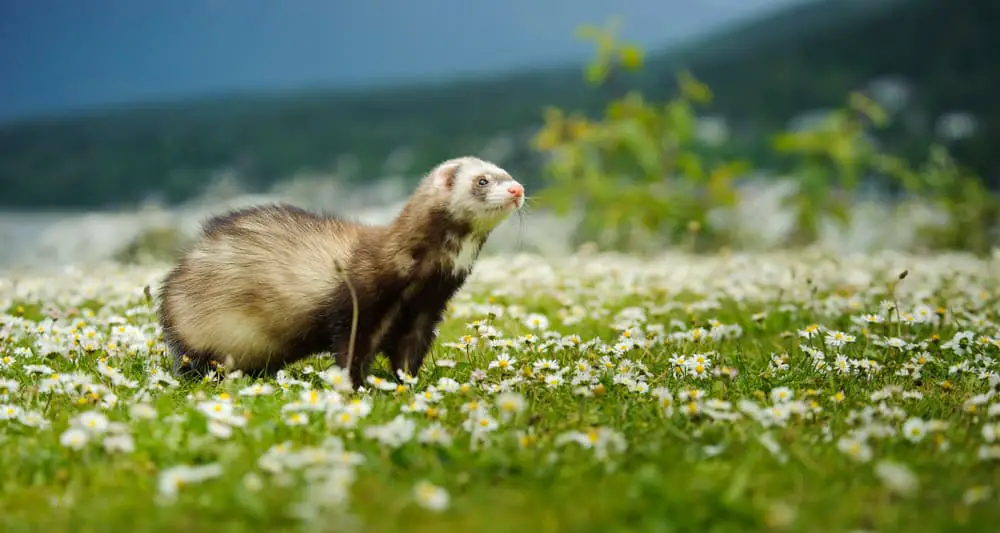
Closely related to the polecat, ferrets are domesticated members of the weasel family. They are very similar to weasels in shape and behavior, preferring the twilight hours to be active. Like weasels, they are carnivores and need to eat frequently due to their high metabolism and short digestive tract.
They are about two feet long, with about five inches of that being tail, and weigh between one and a half to four pounds. Ferrets can also live in social groups, unlike most of their weasel cousins. They may live from five to nine years as a pet.
Ferrets are thought to have been domesticated about 2500 years, perhaps in Northern Africa or the Mediterranean, probably for hunting small mammals such as rabbits. They are now sold as pets in the United States and around much of the world, though are illegal in some areas.
10. North American River Otter

The river otter is an aquatic mammal that lives throughout North American coastal lakes and waterways from the Gulf of Mexico to the Pacific Northwest and Canada. They inhabit dens constructed by other animals along these waterways. Otters will usually live in family groups, which sets them apart from other members of the weasel family.
Stocky but sleek, otters weigh between 15 and 30 pounds and can be up to five feet long, one-third of which is the tail. They have short ears and slim heads, streamlined for swimming in the water.
Fish and crustaceans are the favored food of the river otter, which they dive for. Otters can remain underwater for more than four minutes. They may live eight to 10 years in the wild.
11. Sea Otter

The largest member of the weasel family is the sea otter. They can grow to weigh almost 100 pounds and be nearly five feet long.
Sea otters are unique in the weasel family in that they have no burrows, they live completely at sea. They have the densest fur of any animal, nearly one million hairs per square inch, which keeps them warm and dry. These otters are native to the coastline areas of the Northern Pacific Ocean.
Diving for up to four minutes at a time, sea otters pluck shellfish, sea urchins, and crabs off the ocean floor to feed. They will use a tool, a rock, to crack open the shell at the surface of the water. Like weasels, sea otters need to consume a lot of food, up to 25% of their body weight per day.
12. Skunk
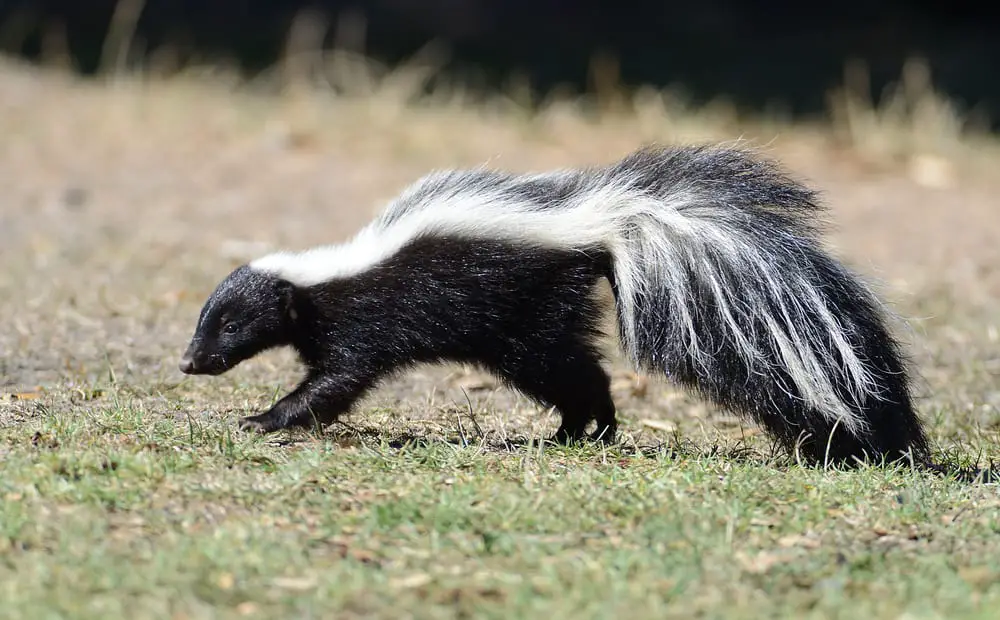
With their distinctive black coats and white stripes, and bushy tails, skunks are the most recognizable members of the weasel family. They are also the most notorious for their ability to spray a noxious liquid from their scent glands. While all members of the weasel family have scent glands, only a few like the skunk can utilize them as defensive weapons.
Skunks, like weasels, prefer the hours of dawn and twilight to be active, and will generally stay in an underground den during the daytime. Unlike weasels, however, skunks have an omnivorous diet similar to the badger, consuming earthworms, insects and larvae, amphibians, roots, berries, and just about anything they can get their hands on. They range all over North America, from Northern Mexico into Canada, in many different environments including urban ones.
Reaching up to two and a half to three feet long and weighing as much as 10 to 15 pounds, skunks are roughly the size of a house cat. They can live up to seven years in the wild.
13. Zorilla
The Zorilla is very similar to the skunk in appearance, having black fur with white stripes. It is smaller, however, at about two feet in length and weighing only about two to three pounds. Zorillas can also use their scent glands as a defensive weapon, spraying the foul-smelling liquid at would-be predators.
They live exclusively in sub-Saharan Africa, except for coastal areas of West Africa and the Congo. Like the weasel, the Zorilla will occupy the burrows of other animals or nest in the brush. They are nocturnal, coming out at night to hunt small animals like rodents, snakes, insects, and amphibians.
14. Tayra
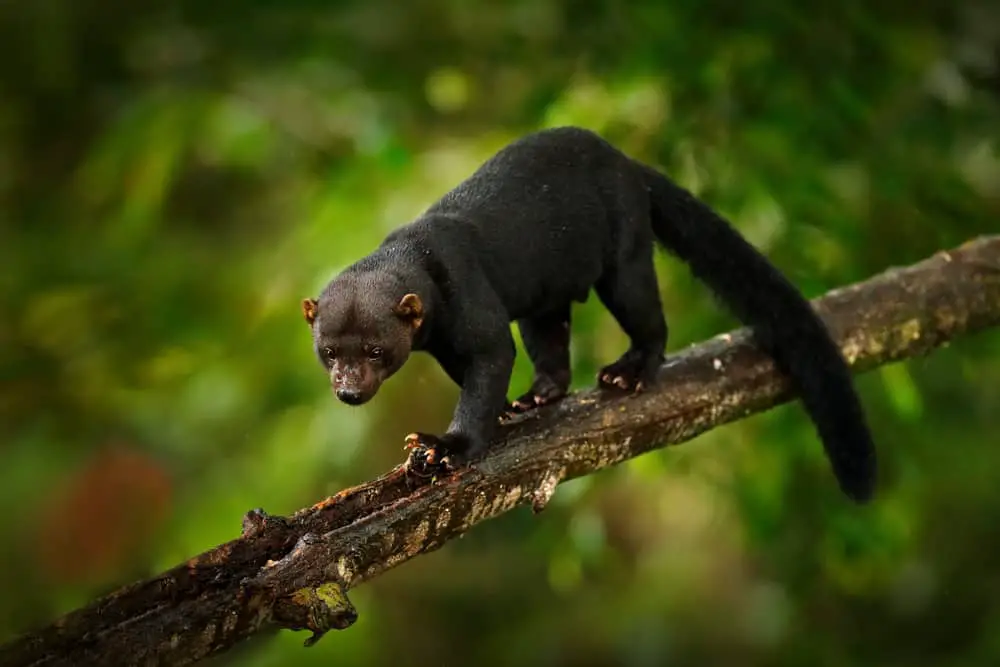
Similar to the weasel, the Tayra is long and slender, but they reach almost four feet in length with their tail being more than a third of that. Tayras have short, dark brown to black fur with a yellowish spot on their chests. They can weigh in at between six to 15 pounds and are omnivorous, eating both fruit and hunting small animals such as birds, lizards, and rodents.
Tayras live only in the Americas, from Southern Mexico to South America, nesting in burrows or hollow trees. Being diurnal, these solitary mammals are usually active during the day.
15. Greater Grison
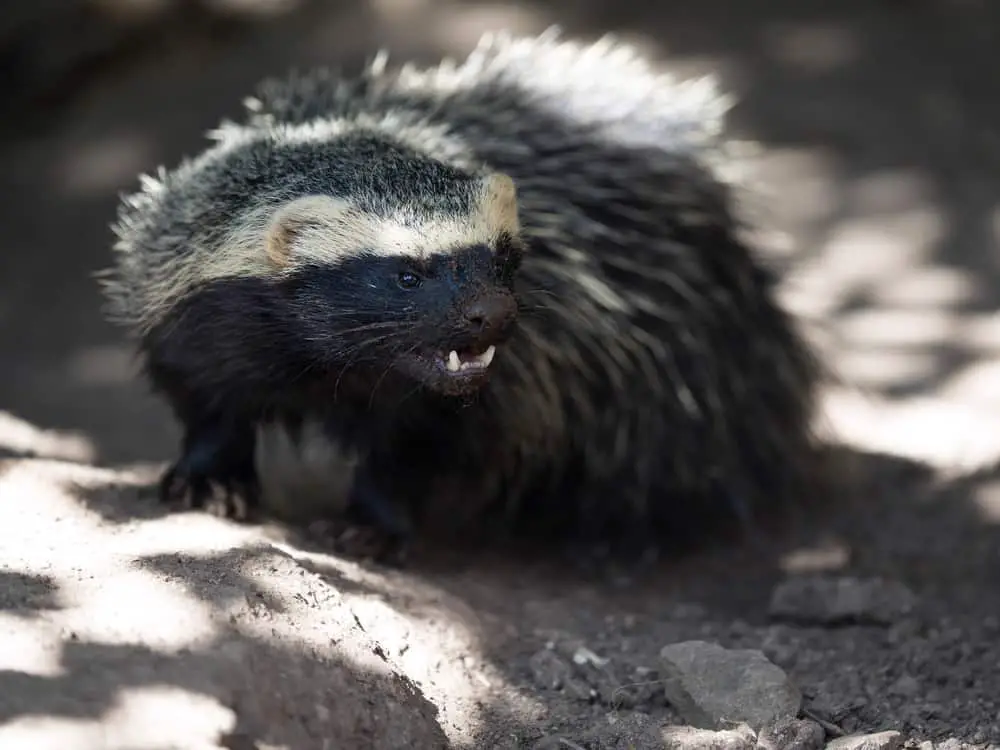
The greater grison is the larger member of this genus of mammals in the weasel family. They have a weasel-like body with coloration similar to a badger. Greater grisons can grow up to two feet long and weigh up to eight pounds.
Their range overlaps that of the tayra, from Southern Mexico through South America. They have webbed feet and are found near rivers or streams. Similar to the weasel, grisons will nest in the burrows of other animals, or in cavities under tree roots.
Their diet consists of small vertebrates such as birds, amphibians, fish, and other mammals which they will hunt for during the day.
Grisons also have the ability to use their scent glands to spray a noxious musk to ward off predators, although this chemical is not as pungent as some of its other cousins such as the skunk.
